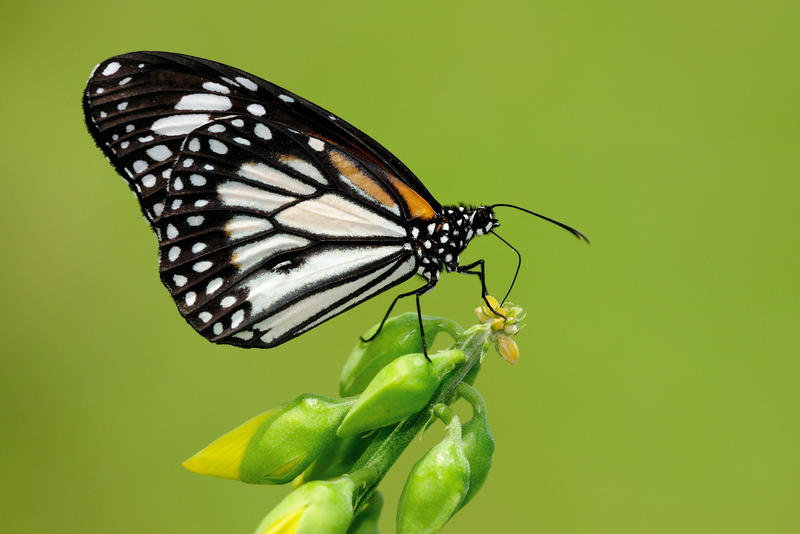This article by Peter Smetacek 2012 shows he too considered the Indian Vagrant to be Vagrans sinha (not V. egista), sp. no 136.
http://www.threatenedtaxa.org/ZooPri...22857-2874.pdf
TL Seow
This article by Peter Smetacek 2012 shows he too considered the Indian Vagrant to be Vagrans sinha (not V. egista), sp. no 136.
http://www.threatenedtaxa.org/ZooPri...22857-2874.pdf
TL Seow
Yes indeed. But at least in butterfly taxonomy, the changes don't come as fast and furious as in botany. Quite a lot of the plant names in C&P4 and Fleming have been revised and oftentimes, it sent me on a wild goose chase looking for names that no longer exist.
How I wish that there is a single body that collates all these scientific studies in a comprehensive repository. I suppose there isn't anyone in Malaysia doing research and publishing papers as prolifically as the Indians and Japs. MNJ 2006 also changed the genus name for Paduca if I'm not mistaken.
Actually, it could be a possible task for BC to collate these papers and use our website or blog as a repository of any research papers that come to our attention. At least for those species relevant to our region.
I also don't recall the discussion on Burara. I think Les pointed us to various recent sources, but I can't be sure.
Many revisions are done in regional journals not available to the public, & not found on the web eg the revision by Eliot in MNJ.
Also many taxonomists may not agree with the revised findings.
Paduca is replaced by Algia, an earler name (dug out in some regional journal) which has priority.
Burara was ressurected by Vane-wright & de Jong as a new genus different from the sena species-group.
(Surprisingly, the other in the sena group (Bibasis) , iluska & mahintha have rounded HW & look like Burara.)
I sensed a confusion among readers as to how the name changes of Vagrans comes about.
Various forms of Vagrans were named from India to the Pacific islands.
eg taxon (taxonomic name) sinha 1844 from India, taxon macrmalayana 1912 (Malaya) ,taxon egista 1786 (Ambon), etc.
They were considered to be forms of a single species & as egista is the oldest name, the species is Vagrans egista, type location Ambon.
Ambon thus have the nominate ssp. V. egista egista.
India have V. egista sinha.
Malaya (including all of Sundaland & south Philippines) V. egista macromalayana.
Tsukada in his revision in 1985 considered the western forms to be a separate species.
As sinha is the oldest name the western population becomes Vagrans sinha, ie. Vagrans egista sinha becomes V. sinha sinha in continental Asia.
As there is very little difference between forms of sinha & macromalayana, the taxon macromalayana is dropped as a subspecies & becomes a synonym of sinha.
This course of action was followed by Treadaway1995 (ssp brixia also dropped) , Vane-wright & de Jong2003,& Smetacek.
(note Peter Smetacek have included a ssp pallida which he considered distinctive.)
Thus Vagrans sinha sinha 's range extends from India to the Philippines.
The eastern forms from Maluku to the Pacific islands remain as V. egista.
They have rounded wings, stubby tails, & are much less heavily marked.
TL Seow
Last edited by Psyche; 12-Jun-2013 at 12:19 AM. Reason: spelling
My understanding is that Bibasis and Burara are seperated by the shape of the male genitalia, especially the aedeagus, which is short and stout in Bibasis whilst long, thin and curved in Burara. Also, Burara species have a small black basal spot on the hindwing underside (Pinratana 1985). Whether these are sufficient to split the two is a matter of opinion.
Another Tiger show today at GB. These 2 Tiger shots taken with Sigma 150mm. Both shot at same setting AV, ISO400, 1/500s, f8.0.
CHNG
In the spirit of science, there really is no such thing as a 'failed experiment.' Any test that yields valid data is a valid test.
-Mark-
Consolidate GB photo here...
F8, 1/640, ISO640, AV, fill flahsed, handheld
F10, 1/500, ISO800, AV mode, fill-flashed, handheld
No-flash, did some tweaking to brighten up the butt
F10, 1/500, ISO800, AV, flash off, handheld
F9.0, 1/800, ISO800, AV mode, fill-flashed, handheld
F9, 1/640, IS1000, AV mode, fill-flashed, handheld
Something very big

-Loke
Peacock Royal (Tajuria cippus maxentius)
Common Tit (Hypolycaena erylus teatus)
Common Tiger (Danaus genutia genutia)
Common Tiger (Danaus genutia genutia)
Common Tiger (Danaus genutia genutia)
Black Veined Tiger (Danaus melanippus hegesippus)
Black Veined Tiger (Danaus melanippus hegesippus)

Anthony
The needs of the many outweigh the needs of the few or one.